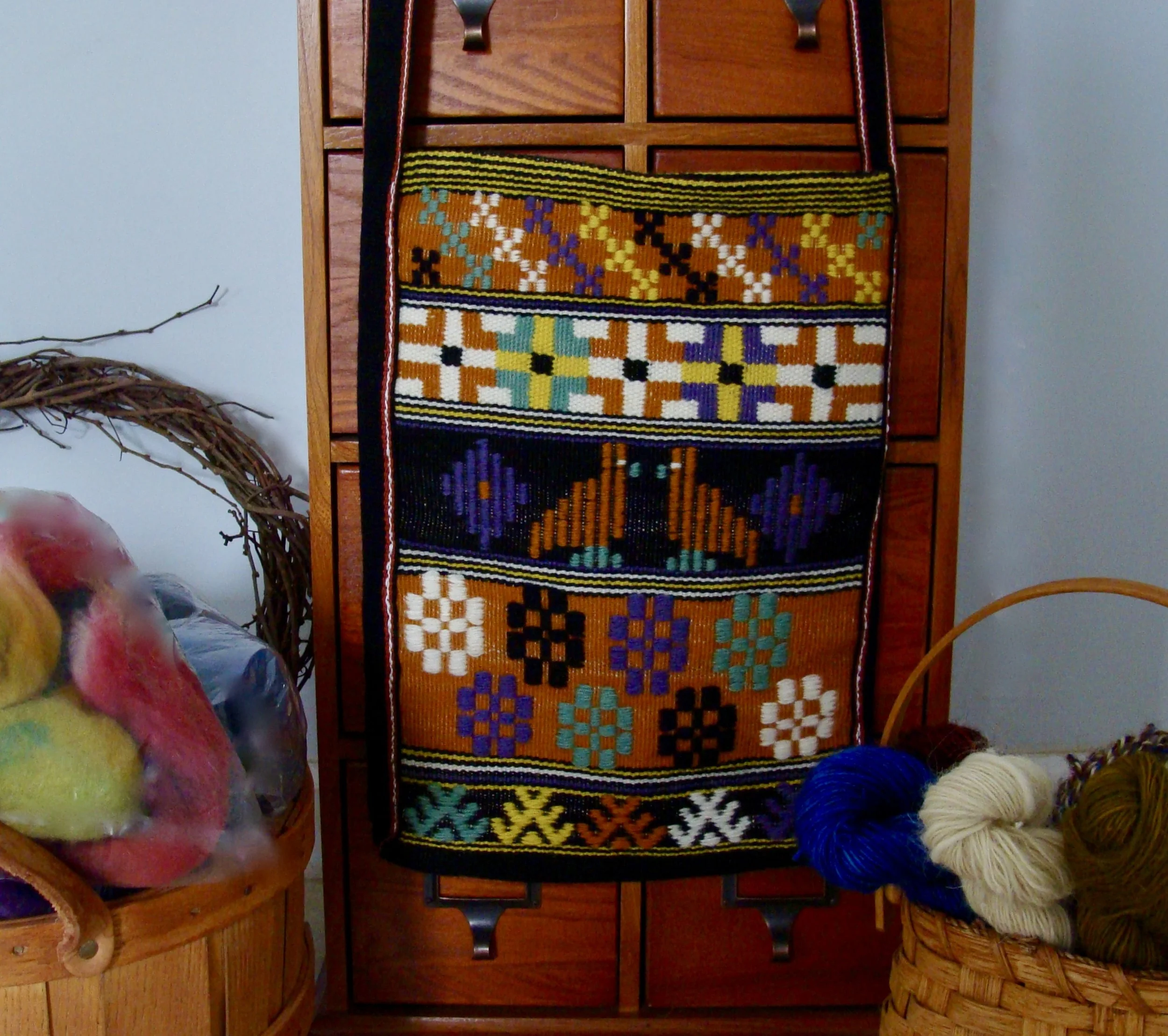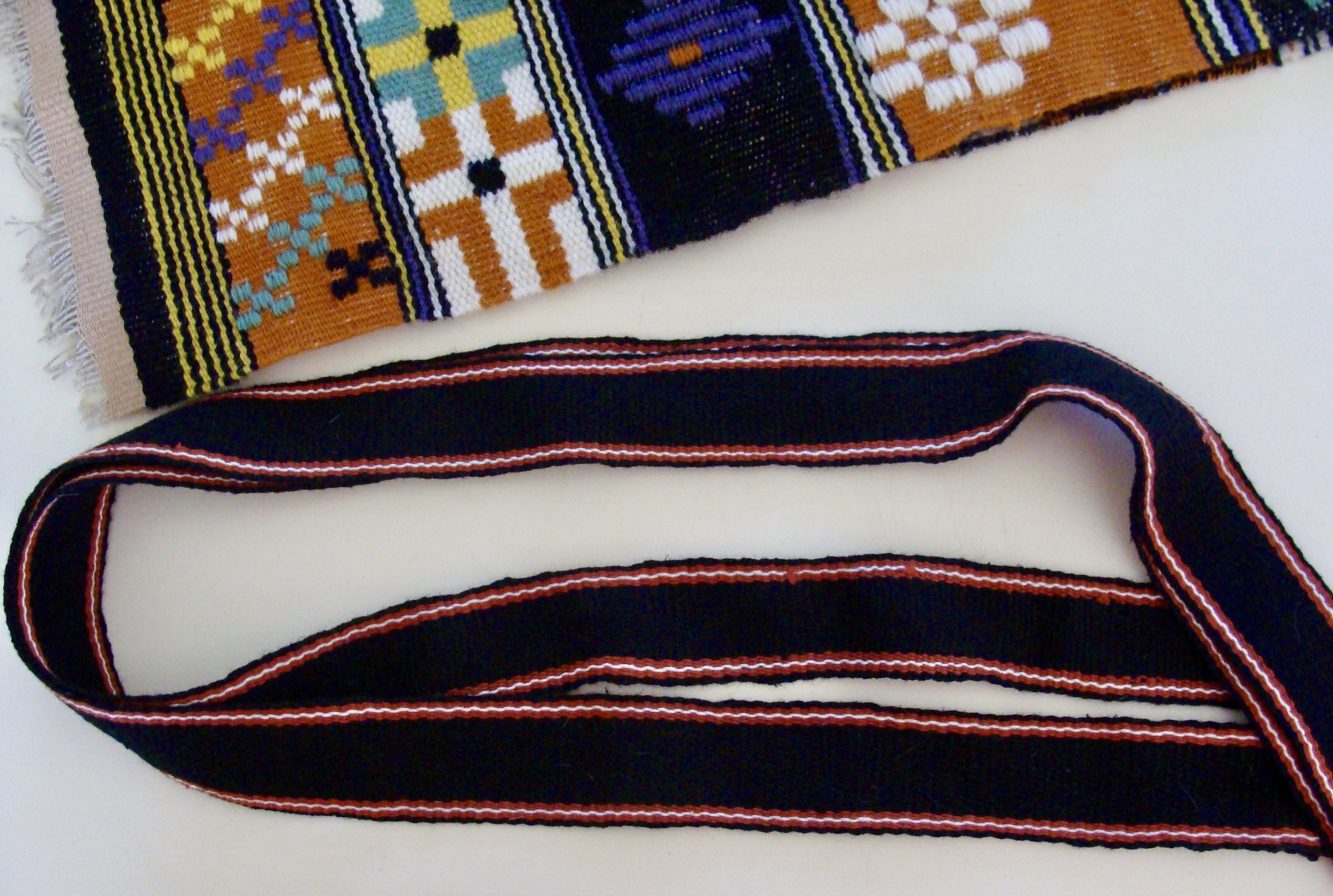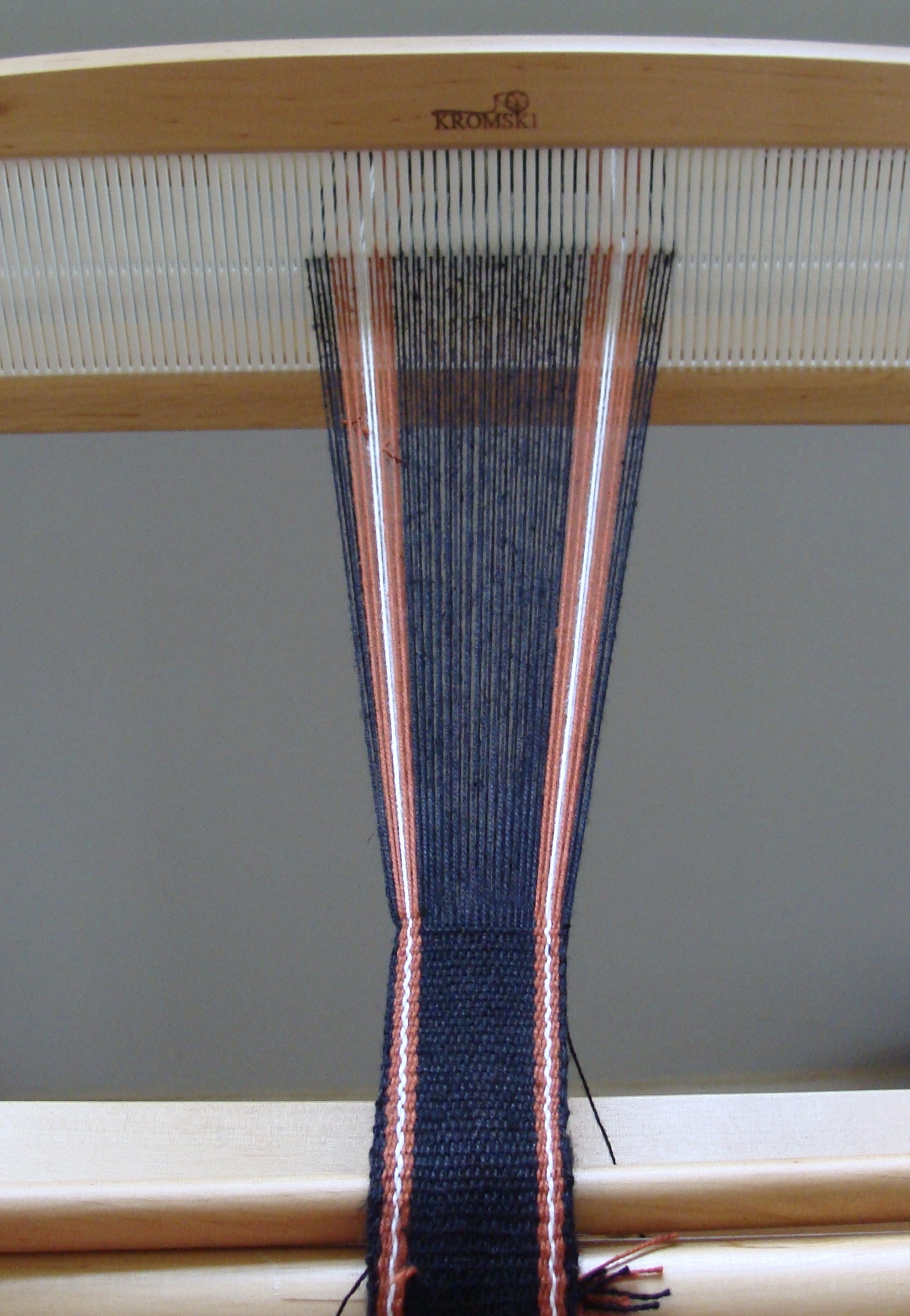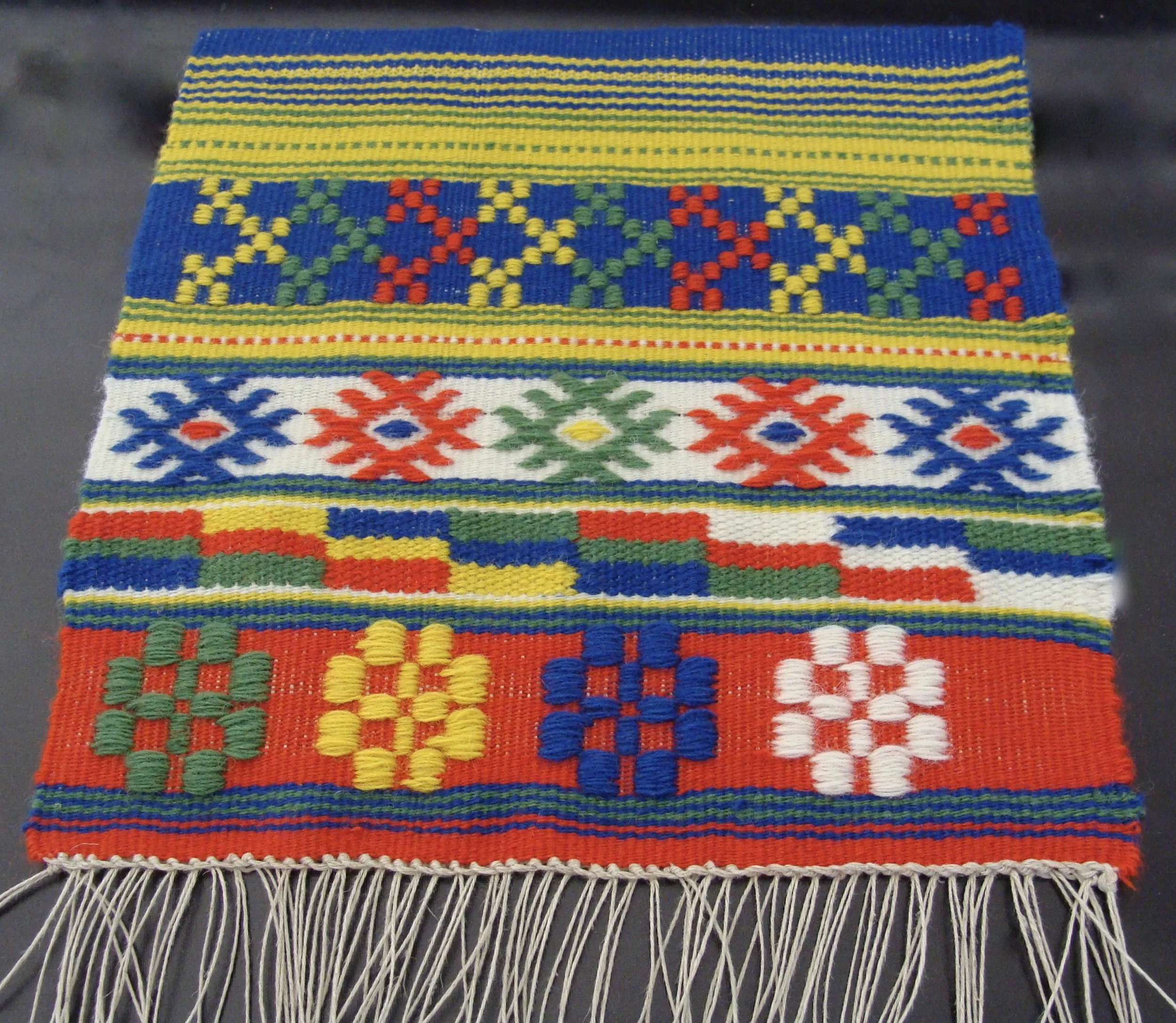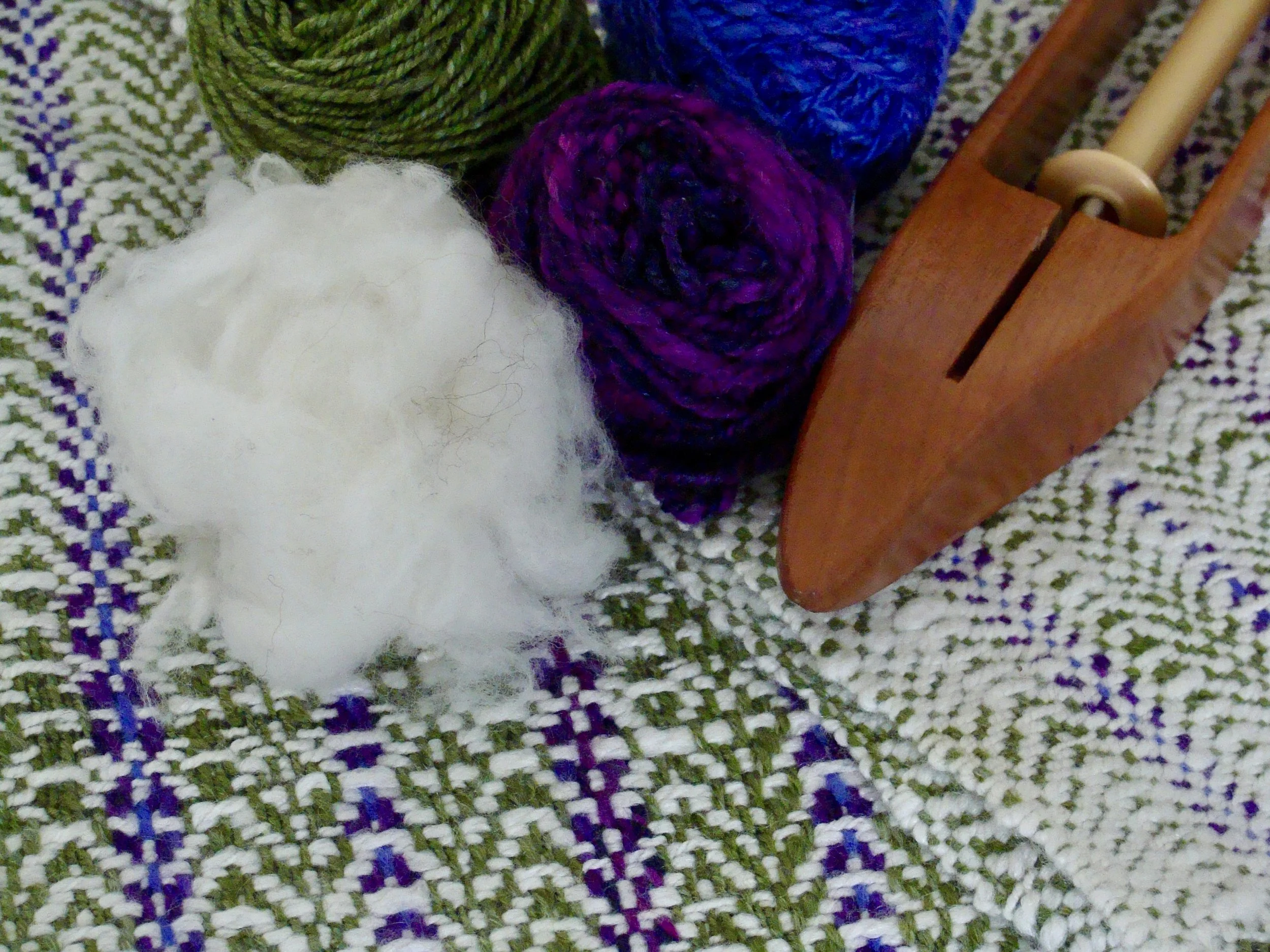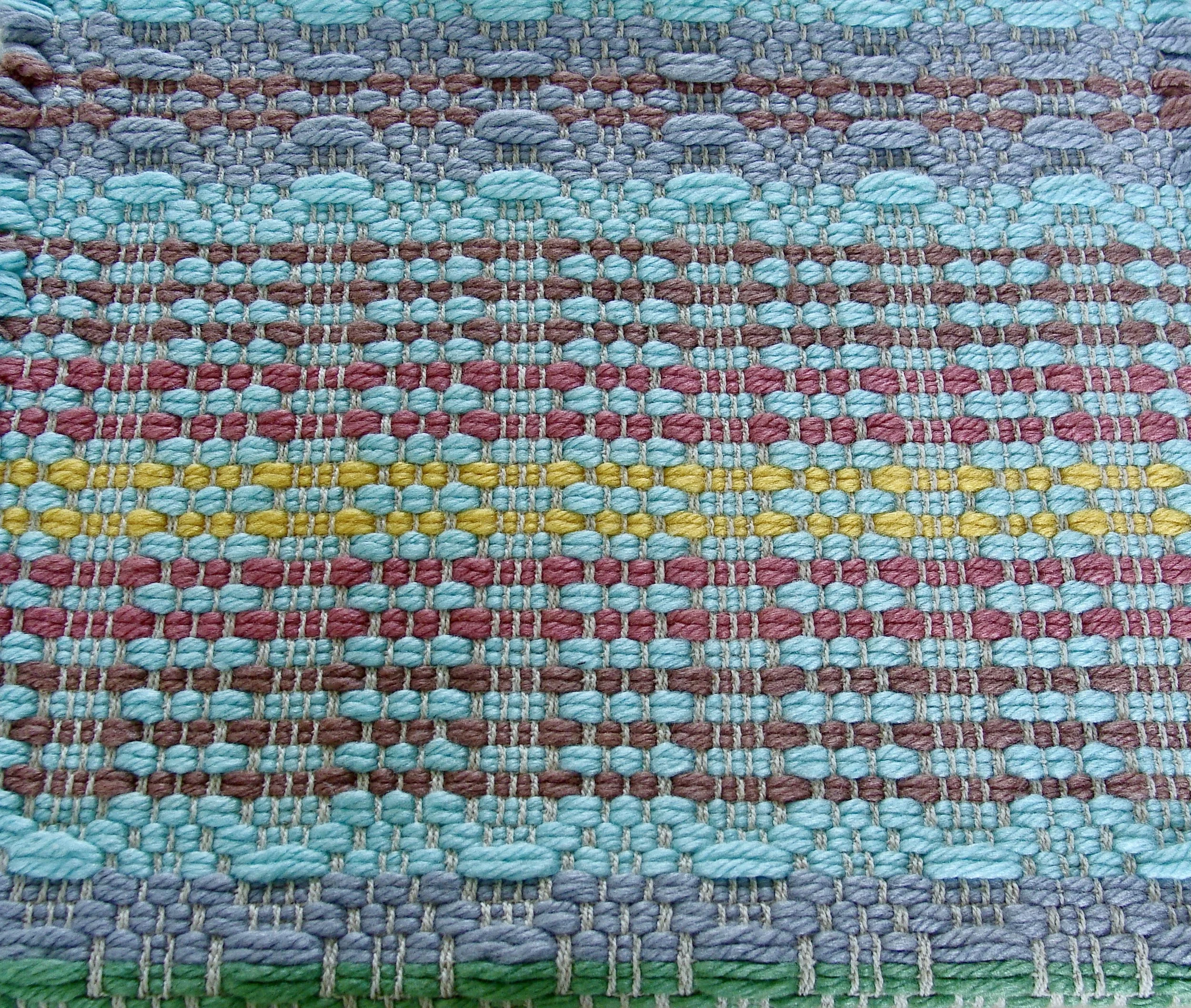Swedish Art Weave - Part 1
In my July post about Telemarksteppe (another Scandinavian weave), I wrote that I would be attending the MAFA (Mid Atlantic Fiber Association) conference and taking a 4 day workshop on Swedish Art Weaves with Joanne Hall. Joanne is an excellent teacher and I recommend taking a class with her if you have the opportunity. It was an enjoyable learning experience, inspiring me to immediately start another project when I returned home.
I will be sharing what I learned in a two-part series. In today's post, I'll start with a finished project. In part 2, I'll write more about the individual Swedish Art Weave techniques.
My project was based on a design by Gunvor Johansson appearing in VÄV Scandinavian Weaving Magazine, February 2013. The weaving is a sampler of various techniques - halvkrabba, rölakan, dukagång, Monk's belt with heddle rods, and krabbasnår. The sampler became the front of a tote bag (11 inches x 15 inches with a 36 inches shoulder strap) that can be used for an iPad/small laptop, purse, or small project.
The back of the bag is woven mostly in pick-and-pick stripes (käringar tänder). In part 2, I'll describe each of these techniques in more detail.
Although, I wove on my Louet Jane 8-shaft table loom, all the techniques can be woven on a 4-shaft loom. The warp is 16/3 linen, 112 ends, 10 ends per inch (epi). The weft is 6/1 Fårö (Borgs) single ply wool in six colors: Black, Pine, Grape, Yellow Ochre, Canary, and Unbleached. The ground weave is woven with a single yarn and the patterns are woven with three strands of the single ply yarn. These weaves are mostly one-sided and are woven with the back side up.
So, a mirror is used to look at the 'right' side. Above is actually a photo of the "right" side reflection in my mirror. I used a frame mirror that fit nicely under my loom. Because this type of weaving is so detailed with lots of thread manipulations, I frequently checked in the mirror for errors so they could be corrected before continuing.
The weaving is one piece with about 1 1/4" of black woven as a base between what will be the front and back of the bag.
A woven band is used for the shoulder strap and for the side sections to join the front and back of the bag. Ideally, band weaving is done on a band loom or an inkle loom, which I don't own. Instead, I used my rigid heddle loom which worked well with just a few adjustments.
In order for the band to have the strength needed for a shoulder strap, it needs to be woven densely with the warp threads so close together that no weft threads show (warp-faced fabric). I used 60 warp threads at about 48 ends per inch, drawing the threads from about 5 inches down to 1 1/4inches in width. Wool would stretch as a shoulder strap, so I searched my stash for similar colors and ended up using 8/2 cottolin (black) and 8/2 cotton (white and burnt sienna).
Because the warp threads are so close, the heddle is only for making the sheds, not for beating the weft threads.
Instead, I used a small needle shuttle to firmly press/pack the weft threads in place. (Tip-these needle shuttles are also great for weaving many of the techniques in the Swedish Art Weave).
Jane Patrick in 'The Weaver's Idea Book' recommends, when using a rigid heddle loom for band weaving, to weave as close to the front of the loom as possible, as well as to advance the warp every two inches. She also recommended to keep good tension on the warp. These tips worked really well for me.
As you saw above, the threads coming from the heddle really have to narrow down for the final width. Every couple inches of weaving, I vigilantly checked that I was maintaining 1 1/4 inches.
When the band was complete, I folded over the ends and hand-stitched them to give a finished edge. These ends will not be seen as they were tucked and sewn to the inside of the bag and then covered by the bag lining.
Using waxed linen thread and little running stitches, I hand sewed the woven band to the front of the bag and then folded the woven cloth up and sewed the woven band to the back of the cloth.
I dusted off my sewing machine (I much prefer to hand sew) to make a lining out of black cotton cloth (no I didn't weave the lining). The lining was hand sewn in with the woven edges folded over to make a finished edge. And done!
Close-up of front. Top to bottom - Halvkrabba, Rölakan, Dukagång, Monk's belt. (Krabbasnår not pictured).
Close-up of back. Stripes, a row of Halvkrabba, and Pick-and-Pick.
Come back for Part 2 where I'll explain more about each of these Swedish art weave techniques.



